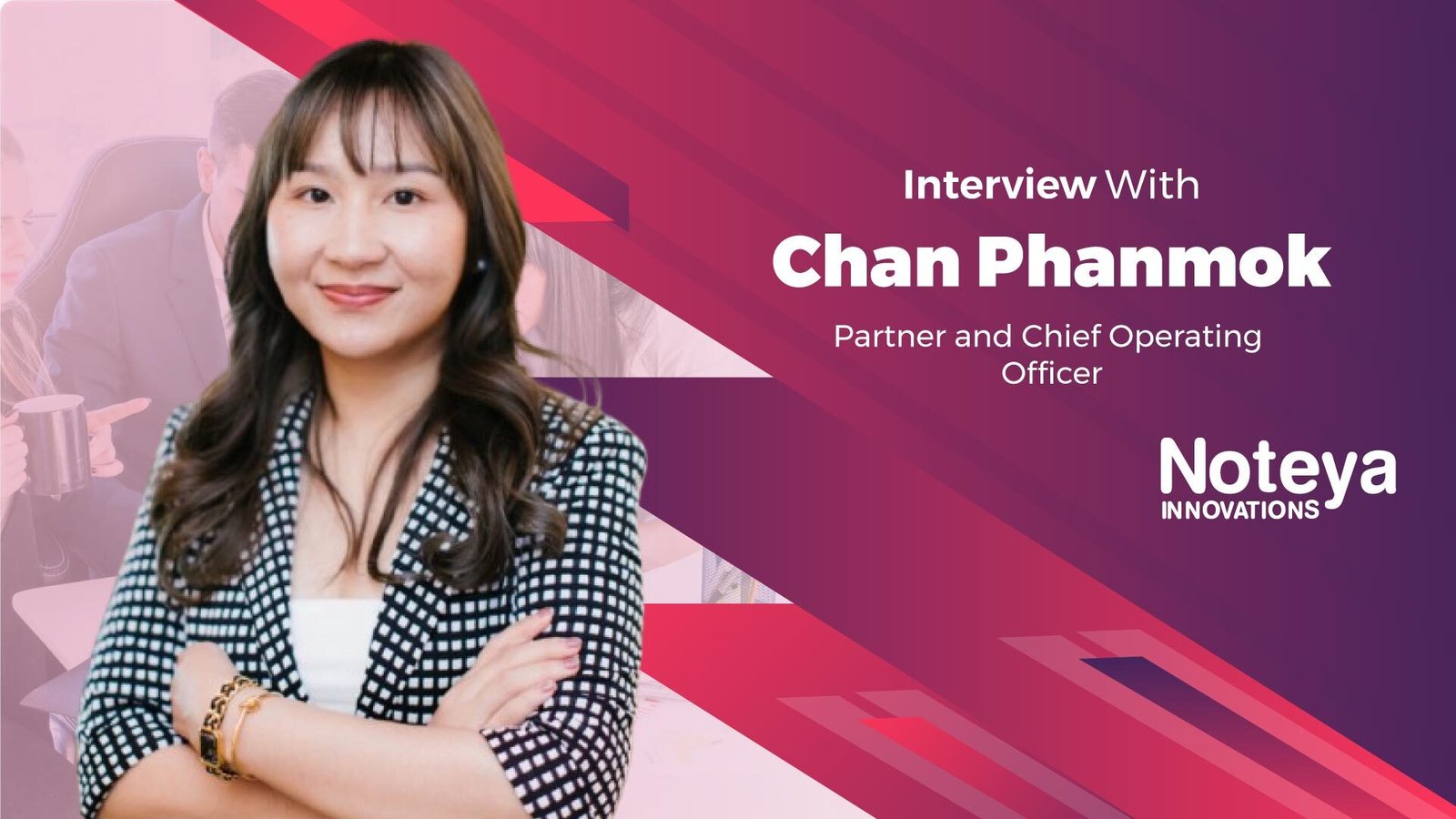Chan discusses her career journey from Post-Sales Support to COO at Noteya Innovations, emphasizing the role of strong standards and procedures in tech project success.
1. Chan, congratulations on your promotion and new partner at Noteya Innovations. Give us a brief about your professional background and your journey from Post-Sales Support led to this achievement.
First of all, thank you very much for this interview.
To be honest, I was somewhat of an average student throughout my high school years. Then I had a chance to travel aboard for a year on a student exchange program in Australia, which was a great experience for me. After this program, I continued to university and earned a bachelor’s degree in Aviation Business Management.
Shortly after graduation, I began working at Noteya Innovation as a support staff for an international call center client, where I was responsible for coordinating the implementation of its SOHO project in cooperation with Teleinfo Media here in Bangkok. This was an exciting first project as TMC is one of the best outsourcing call centers in Thailand. Gradually, I became involved with many additional projects, introducing new technologies and opportunities to Thai companies. I became the Noteya’s Director for Global Accounts. I was then promoted to a Partner in the firm and most recently to Chief Operating Officer.
2. New technology deployments often involve multiple layers of stakeholders, how does establishing proper standards and procedures critical for the success of technology deployments?
In our experience, the long-term success of any technology deployment depends on consistent, logical and well-communicated standards and procedures. These ensure that all companies and stakeholders involved clearly understand their roles, responsibilities and expectations at every stage of the project.
Our firm Noteya is involved in very large and complex technology and management projects, often running several projects in parallel across multiple sites and countries. To address this, we utilize a multi-layered management methodology that allows us to operate effectively by controlling and managing multiple projects in different locations, running simultaneously with various stakeholders. Noteya also embraces individuality, creativity and leadership. With the use of a clear and simple framework of standards and procedures, we have created a unified management and control method where team members can still express their talents within the envelope of standards and procedures.
3. How do you strategize the implementation of roles for various stakeholders to ensure the success of deployment?
As a firm that works with numerous companies and sites, we have implemented a Multi-Layer Management and Control (MLMC) approach to effectively manage and oversee complex projects. Each layer is responsible for a specific set of tasks, allowing for improved efficiency, scalability and risk management. Under this approach, we have created four layers of management and responsibility: Strategic, Tactical, Operational Control.
4. How do well-defined standards and procedures contribute to keeping a technology deployment on track, on time, and within budget?
To my understanding, all projects in all professional areas must stick to a project plan, milestones, deliverables and budget. Technological projects must adhere to the same rules with no exceptions.
Well-defined standards and procedures allow for better delivery quality closer to the customer’s requirements, adhering to international standards within the required project plan, consequently, within budget.
At Noteya, we put the highest value on our customer’s satisfaction with our quality, precision and standards.
5. What are some risks or challenges that can arise when the established procedures are not followed during a technology deployment?
In this kind of situation, where the established procedures are not followed during the technology deployment, several risks and challenges may arise, including increased errors and defects, missed deadlines and budget overruns. This can also lead to ineffective resource management and communication breakdowns. This is the right place to say that standards and procedures are made to create a unified company communication and control method for all members of the company. Such a method, when made clear to all employees, managers, staff and other stakeholders alike, helps to create a unified powerful team.
6. Can you share an example of a successful project where following proper guidelines was key to its success during your journey with Noteya Innovations?
Definitely – there was a time when we had to replace an expired call center system within just three days. It was both a challenging and exciting experience for us. Despite the tight timeline, we successfully migrated all the data to the new system and, by the end of the day, everything was up and running smoothly. Each member on the team knew exactly his or her role, plan, timeline and processes. Due to the very short timeframe, we had to run several tasks in parallel, such as installation, deployment, migration, training, testing, integrations and so on.
7. On the flip side, tell us about a deployment where neglecting procedures led to severe hurdles in completing the project?
Of course, it is of course common in business to experience ups and downs, as we cannot succeed in every opportunity. There was a time when we worked on a central CRM system project and we encountered significant challenges. The end user requirements were not transferred to us properly and the client’s team struggled with cooperation during development. Despite our efforts, after more than seven months of work, we had to terminate the project. It was a difficult decision. Obviously, from every failure we learn and correct our methodology and approach.
8. How does the lack of clear guidelines affect the quality of the technology and the end-user experience?
The lack of clear guidelines significantly impacts both the quality of the delivered technology and, consequently, the end-user experience. Projects are never a one-man show and collaboration is key. Without a defined method or guidelines, progress can quickly get off track and stall. Without a clear timeline or structure for the tasks that need to be completed, it becomes difficult to manage the project effectively. In such situations, supporting both clients and providers becomes extremely complicated, as it is difficult to coordinate efforts or ensure that expectations are met on time.
9. In your experience, how should organizations adapt or refine their standards and procedures to ensure success in future technology deployments?
Humbly, it’s not our place to teach others, but it is clear that technologies are evolving rapidly, often changing overnight. Customers are demanding a higher level of professionalism and becoming more involved in the process. Many projects now integrate several innovative technologies, and both employees and managers are becoming increasingly knowledgeable and aware. In my opinion, this calls for companies to increase their standards and procedures, adapting them to the constantly changing environment to stay competitive.
10. What advice would you give to organizations to ensure that they consistently follow best practices and guidelines for successful technology deployments?
To succeed in a changing environment, stay aware of current trends and make adjustments to stay relevant. Share your updates openly to build trust and show that you are adaptable. At the same time, bring your own creativity and leadership into the mix, staying true to your values, while still thinking outside the box. This way, you can stand out and lead effectively.

Chan Phanmok
Chan Phanmok is a Partner and the Chief Operating Officer (COO) at Noteya Innovations, an international business acceleration and project management consulting firm. She has extensive experience in account, operations and channel management and is responsible for the firm’s international, multisite operations.

